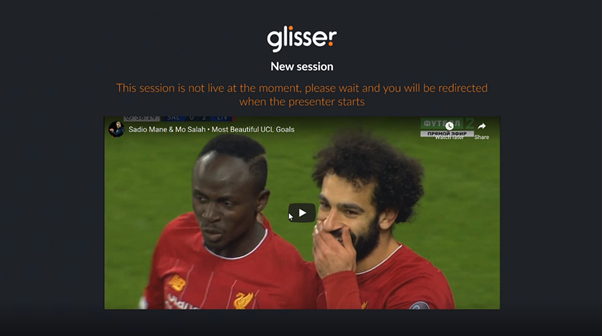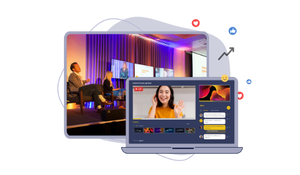Kathryn Frankson, Director of Event Marketing at Informa, Taylor Estes, CEO of production agency Apple Box, plus consultant Dahlia El Gazzar, joined Lovatt for an hour of honest and open dialogue in which planners were told to ‘think again’ if you’re intending to revert back to the same tired old event formats you were producing pre-pandemic.
“Attendees don’t want to color within the lines anymore,” El Gazzar says. “As planners, you’ve got to give them something special, something thought-provoking and we’ve got to shake things up.”
“With the return of in-person events, you have to think differently about your audience. They want to be surprised and delighted. You can’t ask your audience to remain loyal if the coffee is still bad, the format hasn’t changed since 2019 and there’s no new ideas within your event design for me to steal. You have to go back and re-evaluate what you’re doing and why you’re doing it.”
Frankson concurs. She provided surprise and delight for the webinar audience by introducing them to her five-week-old baby, dressed in a onesie that matched mom’s coffee mug by declaring they’re both ‘Ringmaster of the Shit Show’.
“It’s true because it’s crazy out there. We know this industry is wild right now but we’re out there doing it,” Frankson exclaims.
“In the past we’ve always put a lot of thought into the venue for in-person events but that also needs to be front and centre for virtual as well now,” she continues. “There’s something in the ‘where’ a virtual event takes place that can carry the audience and keep them engaged. I saw a great example recently whereby a virtual event was streamed live from the middle of a frozen lake in Minneapolis and in-person attendees did a ‘Polar Plunge’, which saw them jump into the freezing water for charity. It held my attention and made me re-evaluate what constitutes a virtual stage for an online event.”
Next, the discussion turned to technology and whether or not planners are making the most of what’s available.
“My clients are currently looking for platforms that please every stakeholder, ranging from the attendee, speakers and sponsors to the production agency, in-house IT department and compliance officer,” Estes says. “You need technology that is going to evolve with your events strategy so I really think we have to be more aggressive with what we’re demanding from platform providers, in order to ensure they’re fit for a more flexible future, deeper integration into marketing tech stacks and a more hybrid workforce and attendee base.”
“We have got to find technology that replicates the serendipity of attending in-person, with improved data and analytics so that planners and sponsors achieve a clearer and more valuable picture of the whole delegate journey.”-width-700-name-eBook LinkedIn 1200x627 (42).png.png)
Watch the full webinar discussion on-demand to learn more about this topic.
Lovatt then asked the panel to describe the new skill-sets, required to advance event strategies for this new era of technology and enhanced attendee expectations.
El Gazzar believes planners need to get much better at analyzing data and mapping out the attendee journey.
“We talk a lot about actionable insights but all your insights should be actionable. There shouldn’t be any insights that you can’t translate into actions,” she states. “How you translate customer behavior into improved event design is going to be the key to success, alongside the science and art of curating content, attention, acquisition and retention.”
“Event marketing can no longer be done in a cookie-cutter format. It’s a totally different ballgame now and you have to find the right balance of data analytics and interpersonal skills such as empathy and storytelling. Know your audience’s energy levels. Are they extroverts or introverts? Use data to plan more empathetic event design.”
Estes agrees. “We need to be event designers who are comfortable with humanizing the experience. If we develop the skill-sets to increase the human element of our events, they’ll become more authentic,” she says.
Frankson concludes by suggesting that planners should build teams that include ‘futurists’, ‘technologists’, someone who understands the market and your buyers better than anyone, plus talent who know how to cut through the noise and grab the market’s attention.
“Surround yourself with people and partners who can help create micro experiences within the overall event design so that you’re both rewarding those people who paid a premium to get on a plane and travel to your event and those who decided to stay home and access your event design online,” she advises.
To enjoy the full discussion on the ‘Virtual Event Experience 2.0’, register for the on-demand version here.
Check out Glisser.com to find out more about the award-winning meetings & events platform focused on audience engagement, wherever you are.







.png)
.png)